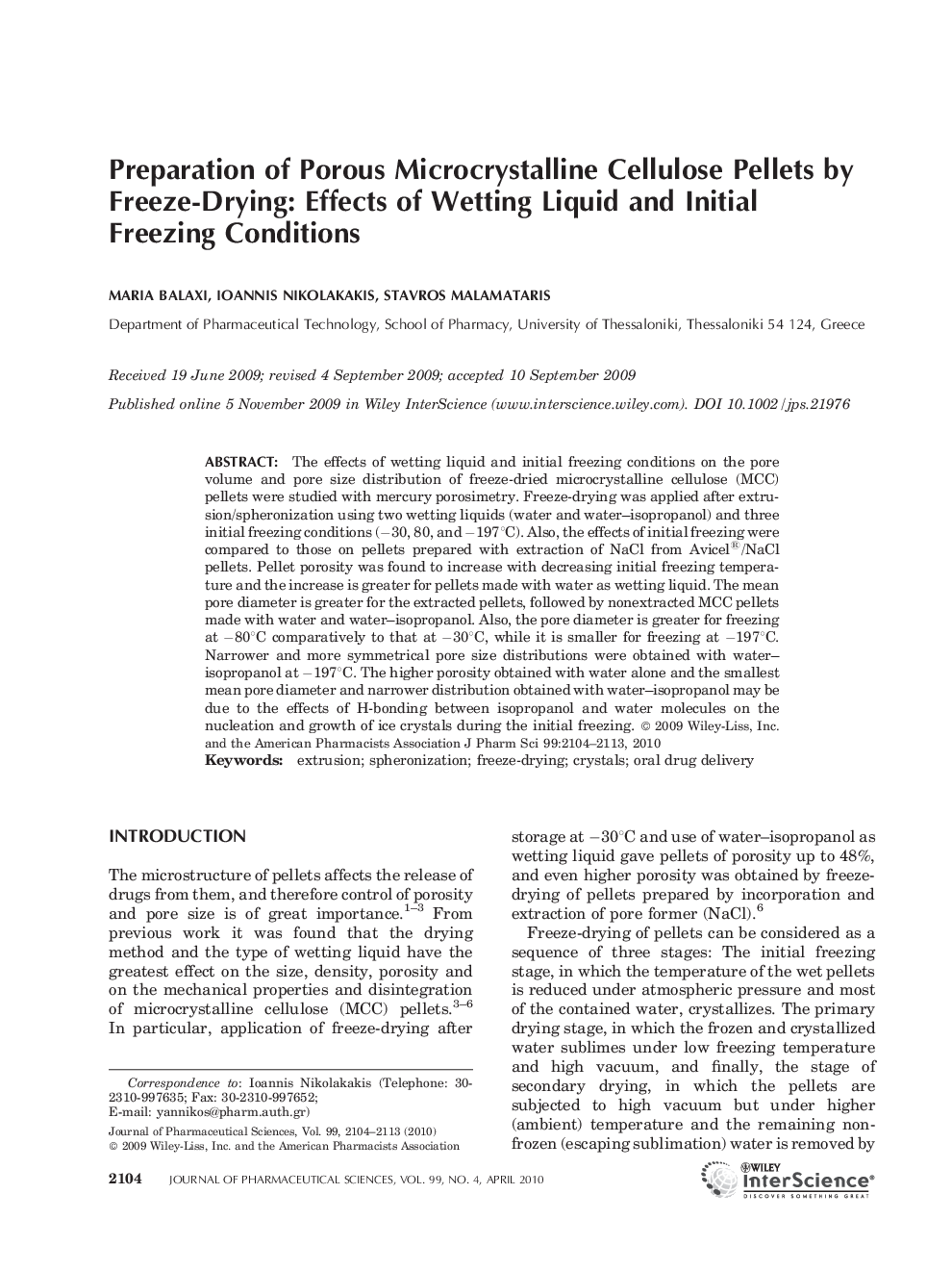| Article ID | Journal | Published Year | Pages | File Type |
|---|---|---|---|---|
| 2485124 | Journal of Pharmaceutical Sciences | 2010 | 10 Pages |
Abstract
The effects of wetting liquid and initial freezing conditions on the pore volume and pore size distribution of freezeâdried microcrystalline cellulose (MCC) pellets were studied with mercury porosimetry. Freezeâdrying was applied after extrusion/spheronization using two wetting liquids (water and water-isopropanol) and three initial freezing conditions (â30, 80, and â197°C). Also, the effects of initial freezing were compared to those on pellets prepared with extraction of NaCl from Avicel®/NaCl pellets. Pellet porosity was found to increase with decreasing initial freezing temperature and the increase is greater for pellets made with water as wetting liquid. The mean pore diameter is greater for the extracted pellets, followed by nonextracted MCC pellets made with water and water-isopropanol. Also, the pore diameter is greater for freezing at â80°C comparatively to that at â30°C, while it is smaller for freezing at â197°C. Narrower and more symmetrical pore size distributions were obtained with water-isopropanol at â197°C. The higher porosity obtained with water alone and the smallest mean pore diameter and narrower distribution obtained with water-isopropanol may be due to the effects of Hâbonding between isopropanol and water molecules on the nucleation and growth of ice crystals during the initial freezing. © 2009 WileyâLiss, Inc. and the American Pharmacists Association J Pharm Sci 99: 2104-2113, 2010
Related Topics
Health Sciences
Pharmacology, Toxicology and Pharmaceutical Science
Drug Discovery
Authors
Maria Balaxi, Ioannis Nikolakakis, Stavros Malamataris,
